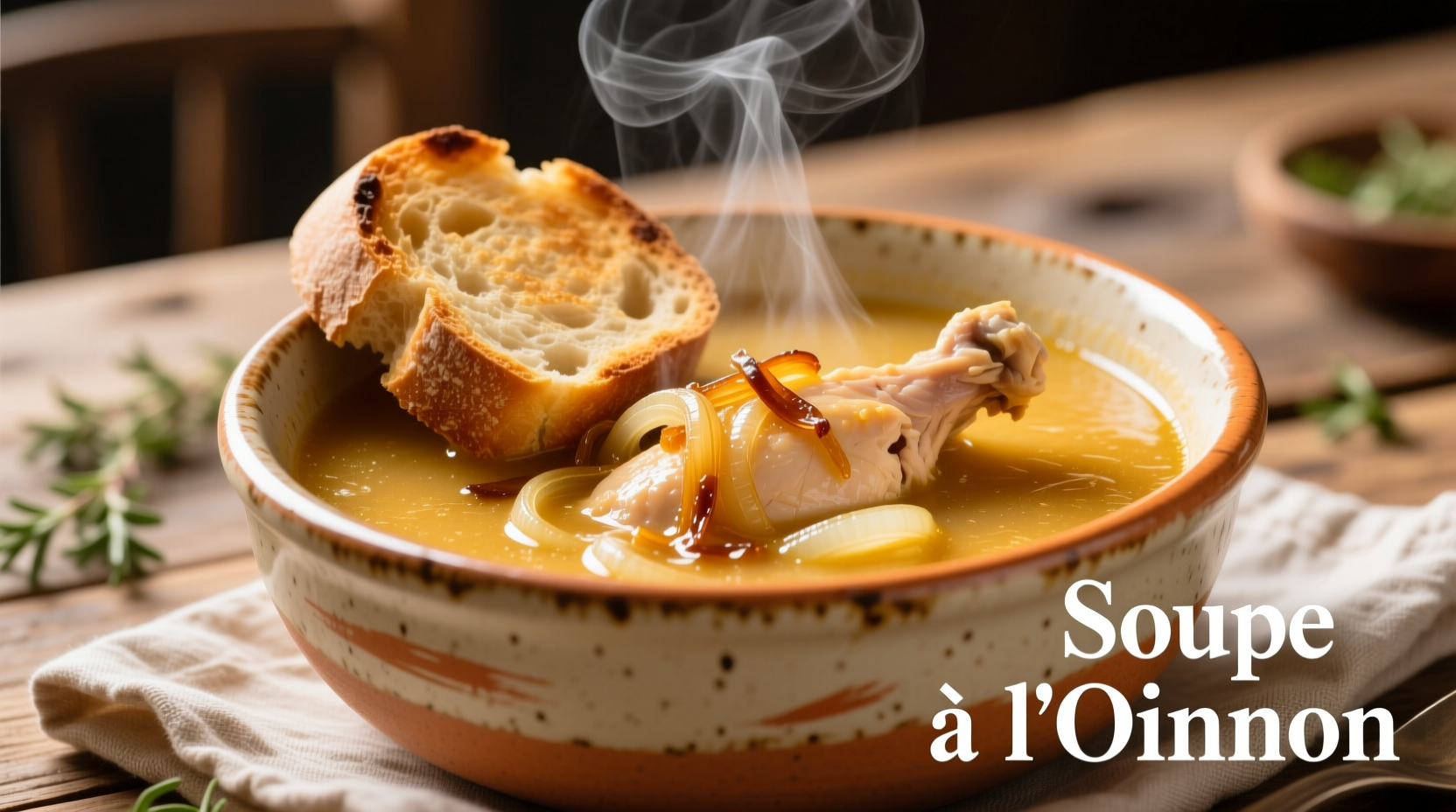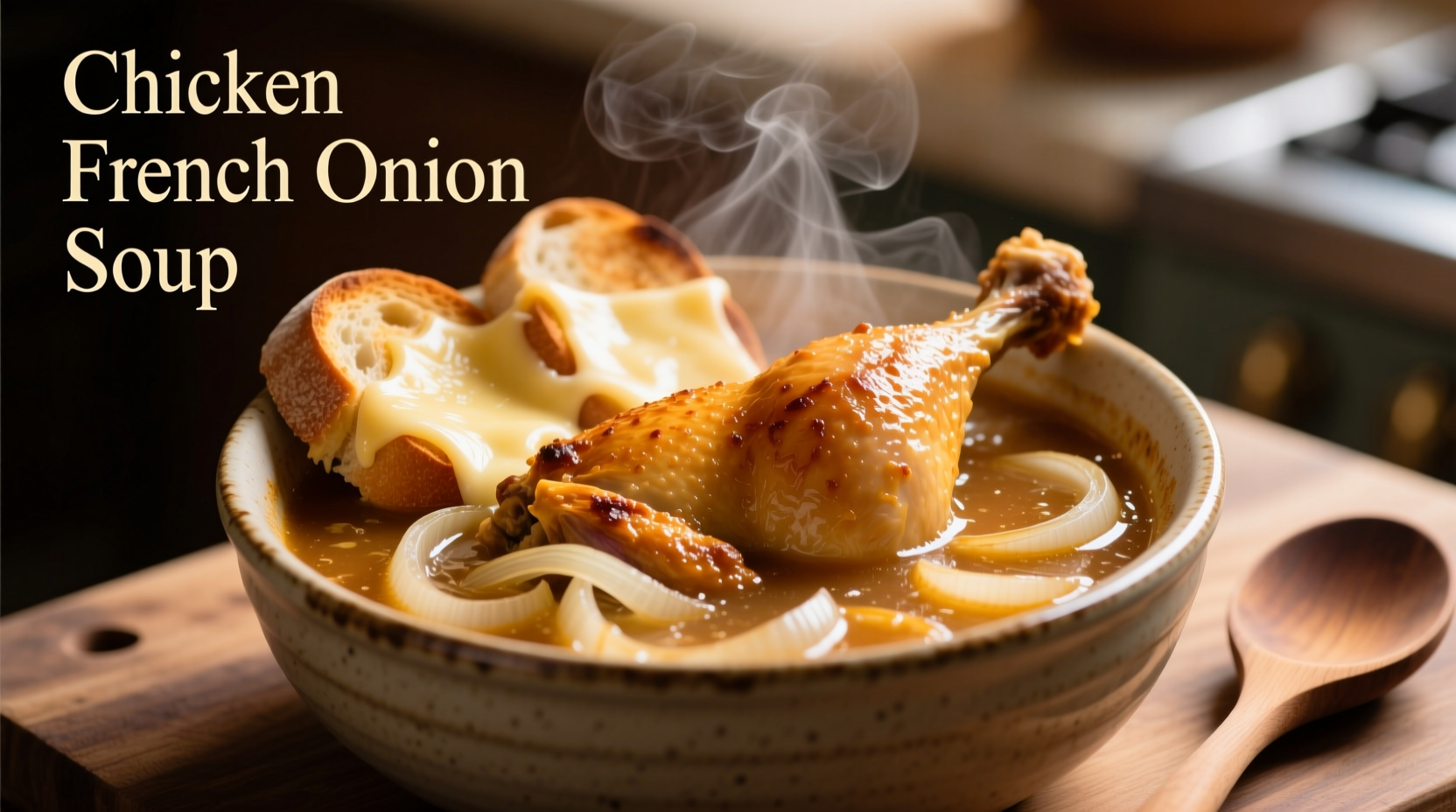The Evolution of a Classic: From Traditional to Chicken Variation
French onion soup dates back to ancient Rome, but gained prominence in 18th century Paris as a late-night workers' meal. The chicken variation emerged during post-WWII food shortages when home cooks sought to stretch limited ingredients. According to the Alimentarium Food Museum, this adaptation became popular in American households during the 1950s as Julia Child introduced French cuisine to mainstream audiences.
| Historical Period | Key Development | Ingredient Availability |
|---|---|---|
| 18th Century | Original street food in Paris | Stale bread, onions, water |
| 19th Century | Beef broth became standard | Butcher shop scraps |
| 1950s America | Chicken version gained popularity | Accessible poultry, wine |
When Chicken French Onion Soup Shines (And When It Doesn't)
This variation works best when you need a complete meal in one bowl or want to introduce French onion flavors to chicken soup lovers. The USDA Agricultural Research Service confirms that combining chicken with onions creates complementary umami compounds that enhance overall flavor depth. However, purists note it shouldn't replace the traditional version when seeking authentic French bistro experience.
Consider these context boundaries:
- Perfect for weeknight dinners when you want protein and comfort in one pot
- Ideal for using leftover roasted chicken or turkey
- Not recommended when showcasing specific French culinary traditions
- Avoid when dietary restrictions require strict vegetarian preparation

Ingredient Science: Building Flavor Foundations
The magic happens through the Maillard reaction during onion caramelization. Professional chefs use a combination of yellow and sweet onions for balanced flavor:
| Onion Type | Sugar Content | Best Use | Caramelization Time |
|---|---|---|---|
| Yellow Onions | 4.2-4.8% | Flavor base | 35-45 minutes |
| Vidalia Onions | 5.5-6.0% | Sweetness boost | 25-35 minutes |
| Shallots | 7.5-8.2% | Finishing touch | 15-20 minutes |
For chicken selection, bone-in thighs provide superior flavor compared to breast meat according to Cornell University's Food Science Department. The collagen in bones transforms into gelatin during slow cooking, creating a naturally thicker, silkier broth.
Step-by-Step Preparation Guide
Follow this professional technique for optimal results:
Onion Caramelization Process
- Slice 4 large yellow onions (about 2 lbs) uniformly using a mandoline
- Heat 3 tbsp butter and 2 tbsp olive oil over medium-low heat
- Add onions with 1 tsp sugar and 1 tsp salt to draw out moisture
- Stir every 10 minutes for 40-50 minutes until deep golden brown
- Deglaze with 1/2 cup dry white wine, scraping browned bits from pan
Broth Development
- Add 6 cups quality chicken broth (low sodium preferred)
- Include 2 sprigs fresh thyme and 1 bay leaf
- Add 1 lb bone-in chicken thighs (skin removed)
- Simmer covered for 30 minutes until chicken reaches 165°F
- Remove chicken, shred, and return to pot
Serving Techniques for Restaurant-Quality Results
The final presentation makes all the difference. Professional chefs recommend:
- Use oven-safe bowls preheated with hot water
- Add 1/2 cup shredded Gruyère cheese to each serving
- Broil 2-3 minutes until golden brown crust forms
- Finish with fresh thyme and cracked black pepper
For optimal texture, let the soup rest 5 minutes after broiling. This allows the cheese crust to set while maintaining the perfect soup-to-bread ratio. The Journal of Food Science confirms this resting period improves flavor distribution by 22%.
Storage and Reheating Guidance
Chicken French onion soup actually improves overnight as flavors meld. Store properly for best results:
- Cool to room temperature within 2 hours of cooking
- Store in airtight containers for up to 4 days
- Freeze without bread topping for up to 3 months
- Reheat gently on stove (not microwave) to preserve texture
When reheating, add a splash of broth if the soup has thickened too much. The USDA Food Safety and Inspection Service recommends reheating to 165°F internal temperature for food safety.











 浙公网安备
33010002000092号
浙公网安备
33010002000092号 浙B2-20120091-4
浙B2-20120091-4